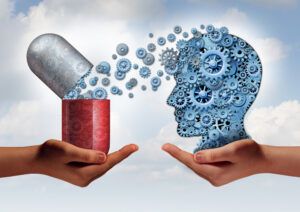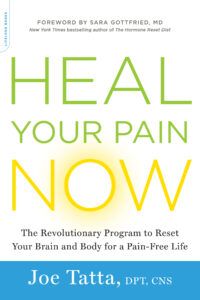Has a new patient ever entered your office with a laundry list of 10 medications that are supposedly “controlling” the severity of their chronic pain? If their pain is so well controlled, then why are they in your office, still searching for ways to heal their pain?
Is polypharmacy really helping our patients?
Many have been prescribed what I refer to as the SOB pain cocktail.
S= SSRI’s
O= Opioids
B= Benzodiazepines
A deadly mix for sure…
Year after year, research suggests that very few medications improve chronic pain or related dysfunction, so why are pain patients swallowing so many pills every day? Would that laundry list of medications be more or less troubling than a second patient—identical in age, health history, activity level, etc.—who only took 2 medications daily, one being an opioid medication? If you are like most healthcare practitioners, your perception of the second patient is quite different because our society stigmatizes people who use these medications.
Biopsychosocial Learning of Addiction
Chronic use of opioid medications causes changes in the nervous system that lead to drug tolerance, dependence and increased risk for addiction. Research has also found abnormal activity in brain areas involved in emotional learning in people who exhibit addictive behaviors (1). Interestingly, these same brain regions may play a role in predisposing someone to development of chronic pain. This overlap is not evidence that pain causes addiction (or vice versa), but it does imply that emotional learning is important for those who experience both addiction and chronic pain.
Because addiction is partially learned, it depends on factors that impact other types of learning such as:
-
- Psychology
-
- Behavior
-
- Social environment
The biopsychosocial model of pain care provides important insight into the relationship between chronic pain and addiction-based learning.
This model accepts that a disease or genetic predisposition may have triggered chronic pain in the first place. But the biopsychosocial approach equally focuses on the patient’s subjective experience—which is affected by biological, psychological, social and environmental factors—as they learn to adapt to and live with chronic pain (2). These factors become important when opioid medications inevitably fail to relieve chronic pain, leaving patients to find their own ways to tolerate it. If they don’t have a strong set of coping skills to draw from, the risk of addiction climbs.

Learning to Live in Pain
If addiction is learned, what exactly are people with chronic pain learning? Research has found that negative thoughts related to pain are big drivers of the emotional suffering we see in our patients. Negative thoughts determine how a person interprets their pain in two primary ways: (1) it increases the focus on current pain and (2) reinforces a cycle of negative emotions and problem behaviors that underlie their hardships. The person with chronic pain who has not yet developed coping skills will constantly be on the lookout for pain-related information in order to interpret their experiences. For some patients, their lives begin to orbit around their pain.
Thoughts about pain are important because they motivate people to adopt helpful coping strategies. In turn, effective coping can change how pain is experienced and reduce the distress it causes. Coping strategies include any behaviors that are intended to change pain, like relaxation exercises, distraction, and positive self-statements. Coping helps patients to take control of their pain, which can be a powerful way to rebuild self-efficacy and confidence. Not all coping is positive. Pain catastrophizing is a cognitive coping style that leads to feelings of helplessness and a preoccupation with the negative consequences of pain. Catastrophizing has been shown to correlate with pain intensity across many chronic pain populations. Either negative thoughts can rein in chronic pain, or they can reinforce its negative potential.
Meanings of Addictive Behavior
Opioid addiction is usually recognized by a patient’s behaviors. Addiction might be suspected if a patient is not taking opioid medication in the doses and schedule recommended by the prescribing doctor. Another red flag is drug seeking behavior, like buying pills from friends or dealers. This behavior-based approach makes sense in many cases, but some chronic pain patients may appear to display addictive behavior, though they are not truly addicted (3).

Five Common Reasons for Erratic Medication Use in Chronic Pain
-
- Opioid medication is not prescribed in a way that adjusts to the unpredictable nature of chronic pain. A cardinal feature of chronic pain is that it can quickly change without any obvious rhyme or reason. For instance, “pain flares” are rapid exacerbations of symptoms that many pain patients experience. If a patient hasn’t learned strong coping skills and believes that medication use is the most effective way to control pain, it’s not surprising that opioid use would increase during pain flares. Patients are also more likely to seek help from healthcare practitioners during pain flares, which shines a spotlight on their “non-compliant” medication use.
- Living with pain leads to stressful situations that may make it difficult for patients to take their opioid medication. “Bad” pain days are unpredictable and can be debilitating which may lead patients to taking more medication out of sheer desperation. Financial strain can also cause a patient to choose the less expensive opioid medications instead of taking a less addictive drug that costs more. In both of these cases, a strong foundation of coping skills would help to ease distress and pain.
- Poor pain control is associated with pseudoaddiction behaviors, demonstrating the difference between dependence and addiction (4). When a patient has no alternative ways to regulate their distress, they may behave just like an addict. The difference between addiction and pseudoaddiction only becomes clear when a patient’s pain is controlled, and the addictive behavior continues.
- Chemical coping may also overlap with addictive behavior. Despite the name, chemical coping is not coping at all—it is an escape through drugs and alcohol. This type of desperation is seen in pain patients who have other major psychiatric conditions that are not being treated properly. Chemical coping is the desire to take a pill or a glass of whisky—anything—to dampen the emotional and physical pain. This is one small step away from addiction.
- Having a substance use disorder should not take away a person’s right to pain control. Expert guidelines have suggested that opioid use can be considered in those with a history of substance (i.e., in remission) if a relapse plan is established before treatment begins. This approach is useful for post-surgical opioid use, but it makes absolutely no sense for chronic pain. We need to prioritize non-pharmacological strategies for chronic pain patients who have histories of substance misuse (3).
The reasons for “addiction-like” behavior in chronic pain patients can be summarized as follows: Opioid medication misuse in pain patients is a sign that these medications are not effective at controlling chronic pain. Therefore, it is unlikely that the solution to the opioid crisis will include opioid medication to relieve pain.
What are the options for “curing” opioid misuse in pain patients?
Cure #1: De-Stigmatize Chronic Pain
The healthcare system knowingly provides pain patients with medication that has a high risk for addiction but that is unlikely to relieve their pain in full. More alarmingly, these patients are often stigmatized because they rely on opioid medications inappropriately prescribed to them by healthcare practitioners whom they trust.
Take a moment to let that sink in.
The opioid crisis has given rise to a culture of fear. The most important step a practitioner can take is to move beyond this fear and understand what is motivating the misuse of opioids. Does the medication adequately control their pain? Have they tried alternative (non-pharmacological) interventions? Do they have a strong foundation of coping skills to draw from? Each of these questions has an answer that points to specific solutions that will guide your next steps.
Cure #2: Practitioners Who Know Better, Do Better
I encourage my patients to find natural ways to relieve their pain, like proper nutrition, staying active, and practicing positive coping skills. Unfortunately, the modern medical approach is quite different: doctors prescribe opioids for pain control because they usually have nothing else to offer. Research has repeatedly shown that opioid medications are great for things like post-surgical pain, but they are and always have been mediocre at best in reducing chronic pain.
In my book Heal Your Pain Now, I discuss the sad state of pain education in medical training. In North America, the average medical student receives less than 5 hours of pain education. Similarly, trainees in a number of other healthcare professions often receive outdated pain education that falls 15-20 years behind current pain science. Across many chronic pain populations, current research supports a biopsychosocial model that reinforces the value of a person’s unique experience in pain in assessment and treatment. By expanding the scope of medical and professional education about pain, prescribers will learn that a number of non-pharmacological treatments can provide more pain relief than opioid medications of the past.

Cure #3: Controlling Pain with Coping
We may not be able to control pain, but we can control our reactions to it. This is the main reason why it’s important to develop a variety of coping strategies that are practiced regularly. Effective coping includes the following steps: putting the situation into perspective (e.g., “I know my pain is bad, but I can use relaxation and distraction to get through this”), evaluating all of the helpful ways you can respond to the situation (e.g., choosing between body scanning, progressive muscle relaxation, or mindfulness meditation), gaining control by choosing a course of action (e.g., deciding to go with mindfulness meditation), and deciding whether the action was helpful. The more a patient practices this decision-making process, the more automatic it will become when they need to get through a tough pain situation (5)
Replacing Addiction with Biopsychosocial Care
What can you do for your patients who are prescribed opioids and continue to struggle with their pain? There are simple steps you can take that can give your patients the coping strategies they need to manage the unpredictable nature of chronic pain.

-
- Validate your patient’s struggles with compassion.
-
- Demonstrate a variety of relaxation and distraction techniques so a patient can find one that works for them.
-
- Plan ahead! Encourage your patient to develop a pain crisis game plan that combines powerful coping tools like distraction from pain, relaxation, seeking social support, and compassion.
-
- Monitor behaviors over time to identify potential issues with medication adherence and document level of risk for addiction at each visit.
-
- Coach them on diet and nutritional change. The microbiome influences the brain and pain.
-
- Calmly discuss concerns about addiction with a patient to better understand what is motivating their medication use.
-
- Work with them toward acceptance and fear-avoidance behaviours regarding movement and activities of daily living.
[Read: 5 Controversial Misconceptions About the Biopsychosocial Model of Pain]
By shifting our focus from addiction to pain control and coping, we can help give pain patients the relief they have been seeking all along.
How do you see the biopsychosocial model as a potential remedy for the opioid epidemic?
Let us know and connect with us on our Facebook page!



